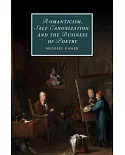An in-depth examination of the cultural functions of the pastoral in Spain, this study of Montemayor's La Diana and Cervantes's pastoral texts moves away from studies that consider this
literature as purely escapist and imitative. Rosilie Hern獺ndez-Pecoraro considerably expands the discussion on the importance of the pastoral genre to early modern Spanish studies and
supplements the ways in which these texts have conventionally been considered by Hispanists. She argues that the representations of society that occur in the pastoral tacitly mediate the
widespread problems and anxieties felt throughout Spain, from rural poverty and national bankruptcy to the growing and disquieting influence of women in national and local affairs. Taking
account of the immense popularity of the genre, the study demonstrates the relevance of this idealist literature to an understanding of how historical events, economic trends, and cultural
shifts were processed and internalized by early modern Spanish society. An in-depth examination of the cultural functions of the pastoral in Spain, this study of Montemayor's La Diana
and Cervantes's pastoral texts moves away from studies that consider this literature as purely escapist and imitative. Rosilie Hern獺ndez-Pecoraro considerably expands the discussion on the
importance of the pastoral genre to early modern Spanish studies and supplements the ways in which these texts have conventionally been considered by Hispanists. She argues that the
representations of society that occur in the pastoral tacitly mediate the widespread problems and anxieties felt throughout Spain, from rural poverty and national bankruptcy to the growing and
disquieting influence of women in national and local affairs. Taking account of the immense popularity of the genre, the study demonstrates the relevance of this idealist literature to an
understanding of how historical events, economic trends, and cultural shifts were processed and internalized by early modern Spanish society.





















